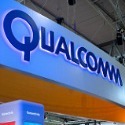
Qualcomm is hoping market traction for its 9205 LTE modem will help light a fire underneath the over-hyped but under-performing cellular IoT market.
IoT has long been talked about as a new revenue opportunity for mobile network operators, based on the theory they can add support for IoT connectivity to their existing wide area networks and either offer IoT services directly to enterprises and consumers, or build a business as a managed or wholesale IoT services provider (or both).
But, as ever, the pace of adoption has been slower than anticipated, so the likes of Qualcomm are keen to fuel the market by developing relevant, cost-effective components.
For its 9205 LTE modem, which was originally announced in late 2018, the chip designer is highlighting 16 design wins, including modules from Fibocom, Gemalto, Gosuncn, MeiG, Neoway, Quectel, SIMCom and Telit.
The chipset, which boasts a range of integrated features such as hardware-based security and onboard application processing, includes support for NB-IoT, Cat M1 and 2G/E-GPRS connectivity.
Qualcomm is selling the chipset as a "single-digit dollar solution" for IoT, says Jeff Torrance, VP, business development, at Qualcomm, although he won't reveal the exact pricing.
Torrance also notes that Qualcomm offers a "long life promise" for this chipset, but again wouldn't reveal what time-scale this covers.
Torrance expects the new modules to end up mostly in tracking and metering devices in the US and other markets.
Qualcomm's chipset is making ground in the market against a background of generally more sober expectations for IoT. "It's definitely been less than what we expected," comments Torrance. He notes that in 2015, the McKinsey Report estimated that IoT could generate $11.1 trillion in global economic value by 2025. By 2017, McKinsey's prediction was more nuanced, estimating that IoT could generate value in the range of $4 trillion to $11 trillion by the same date.
Nonetheless, carriers need to look beyond purely making a profit from smartphone services alone. Torrance says they "have to go and build businesses on the same infrastructure," something a number of operators around the world have started to do in 2018 and into this year with rollouts of Cat M and NB-IoT on their LTE 4G networks.
In the US, for example, AT&T, Verizon and T-Mobile have all now launched NB-IoT networks (or both NB-IoT and Cat M), though that has happened later than expected, as NB-IoT rollouts were originally targeted for 2016 and 2017.
Qualcomm isn't the only chipset vendor hoping to see the cellular IoT market pick up: It faces fierce competition from the likes of Huawei, Intel, Samsung, U-Blox and ZTE.
Related posts:
— Dan Jones, Mobile Editor, Light Reading
About the Author(s)
You May Also Like











